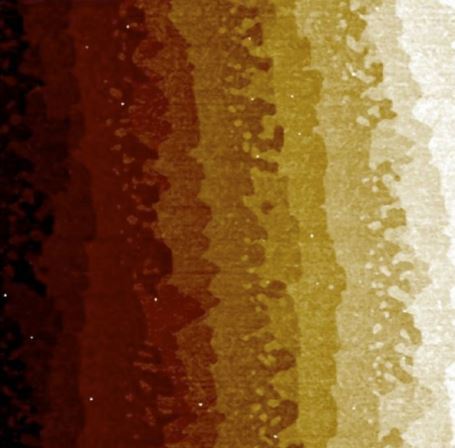Bruker’s PeakForce Tapping AFM Mode in >4,000 Publications
Bruker is celebrating the 10th anniversary of PeakForce Tapping. It’s the fastest growing AFM mode, cited in over 4,000 peer-reviewed scientific research publications.
Blue Scientific is the official distributor for Bruker AFM instruments in Norway, Sweden, Denmark, Finland and Iceland. For more information or quotes, please get in touch.
Bruker AFM range
More articles about AFM
Contact us on +44 (0)1223 422 269 or info@blue-scientific.com
Follow @blue_scientific10 Year Anniversary of PeakForce Tapping
Bruker is celebrating the 10 year anniversary of their PeakForce Tapping AFM mode, which was first introduced in December 2009. It’s the fastest growing AFM mode, cited in over 4,000 peer-reviewed research publications. Over 30% of these publications have been in journals with impact factors in the top 10%.
PeakForce Tapping is outpacing all other recently developed atomic force microscopy modes in research impact and productivity. It’s been widely adopted in materials, data storage and semiconductor research.
PeakForce QNM (Quantitative Nanomechanics) alone has been cited specifically in over 2,000 scientific publications.
Associated AFM Modes
- ScanAsyst – Self-optimising AFM to help you achieve high quality images easily.
- PeakForce QNM – Quantitative nanoscale mechanical characterisation
- PeakForce TUNA – Current mapping on fragile samples.
- PeakForce KPFM – Highest spatial resolution and surface potential measurement.
- PeakForce SECM – Correlated electrochemical and nanomechanical data.
Milestones and Achievements
There have been many firsts and milestones achieved using PeakForce Tapping, which has been involved in ground-breaking publications in many fields.
In 2D materials PeakForce Tapping was used by Professor Konstantin Novoselov and Professor Andre Geim, the 2010 Physics Nobel Laureates for the discovery of graphene. They revealed a commensurate-incommensurate state transition in graphene on boron nitride, published in their Nature Physics article.

In biology it has enabled new studies, including:
- Ligand receptor interactions
- Individual microvilli on live cells
- Variations in the DNA double helix structure.
In soft matter studies it is relied on for quantifying properties at interfaces and interphases, including in adhesives, which had previously been a challenge for other AFM modes.
In energy research it has been used to study:
- Conductivity along individual lamellae in organic photovoltaics.
- Nano-contact pinch-off in solar fuel device development.
- SEI layers in Li ion batteries – both in operando and ex situ.
Recently an article about battery research involving PeakForce Tapping was published in Nature Communications, co-authored by Professor John Bannister Goodenough, 2019 Chemistry Nobel Laureate for the development of Li ion batteries.
More abut battery research with AFM…

Advantages of PeakForce Tapping
PeakForce Tapping increases resolution by using pN-level controlled imaging forces. There are no damaging lateral forces or spatial averaging like in TappingMode.
A complete force curve is acquired at every pixel. This enables nanomechanical mapping (with PeakForce QNM), which separates modulus from adhesion and gives you quantitative data.
It eliminates the need for contact in electrical modes (eg conductive and tunneling AFM such as PeakForce TUNA). This makes it possible to achieve high resolution on soft, fragile samples, and even in liquids, with PeakForce SECM.
PeakForce Tapping is not subject to air damping. This means you can track high aspect ratio structures accurately – particularly useful for industrial applications eg nanometre roughness and deep trenches.
The linear feedback enhances control over resonant modes. This enables robust self-optimisation (using ScanAsyst) without prior knowledge of the sample.

PeakForce Tapping Brochure
More about PeakForce Tapping and how it can be used in various fields, with example images:
More Information
Blue Scientific is the official distributor of Bruker AFM in the Nordic region. We’re available for quotes, advice and answer all your questions – just get in touch:


